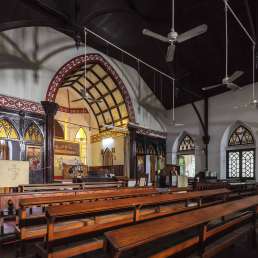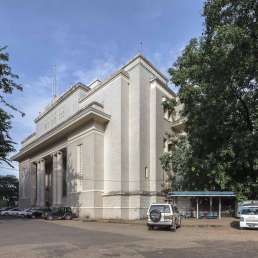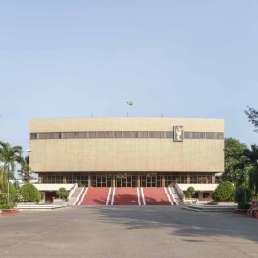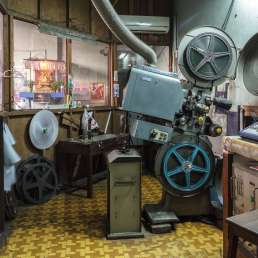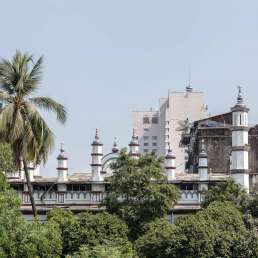Address: Kyun Taw Road
Year built: 2001
Architect: Unknown
In a city full of surprises, this may be one of Yangon’s more surreal buildings. First there’s the premise: an entire permanent exhibition dedicated to class-A drugs and Myanmar’s (frankly dubious) triumphs in stopping their production. And then there’s the building itself: impossibly vast and imposing, with vague allusions to pagoda architecture, especially the tiered roof design and the canopy—although bizarrely, this one is held up by Roman Doric columns. The overgrown and empty surroundings, colonised by stray dogs, are rather haunting.
The façade is tiled a creamy beige. The logo of the Central Committee for Drug Abuse Control—a hand setting fire to opium poppies—adorns the alternate spaces between the three storeys’ mirrored windows. The logo also appears on the entrance’s heavy wooden doors.
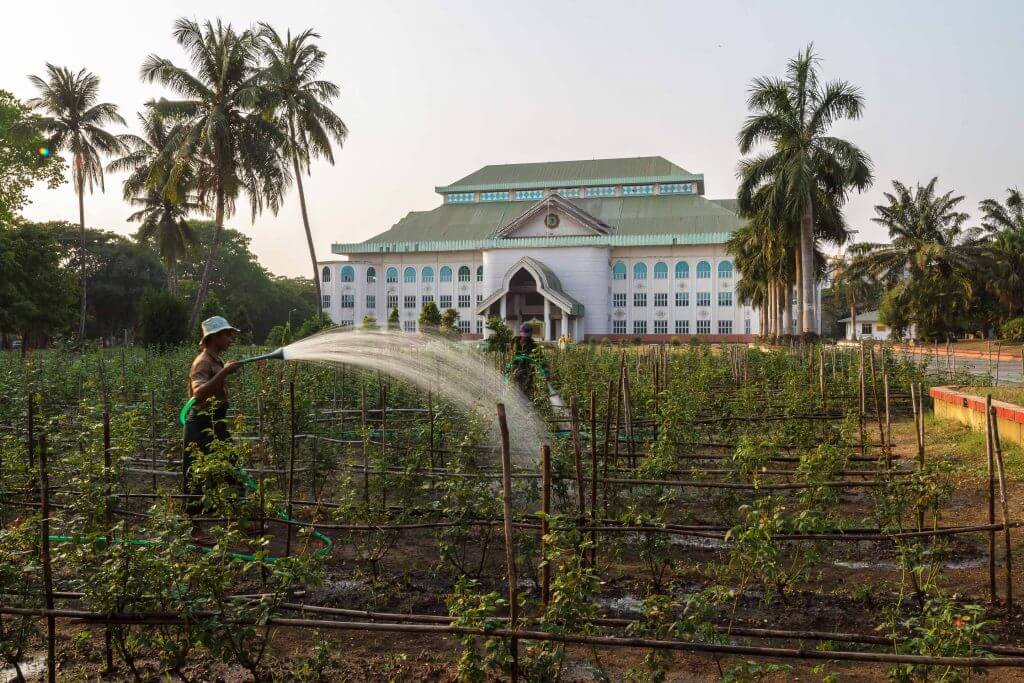
But nothing prepares the visitor for what they find inside: first a deathly silence, ominous enough to discomfort even the most hardened drug users. (Presumably.)
The entrance features a vast portrait of Myanmar’s erstwhile leader, Than Shwe, surrounded by adoring officials. By the picture he is quoted announcing that his government would do its “utmost with whatever resources and capability we have in our hands to fight this drug menace threatening the entire humanity”.
Throughout the museum’s never-ending floors, visitors are treated with detailed descriptions of the global drug trade and the basics of industrial drug production. Fake ecstasy pills are pinned to the wall and itemised, like rare butterflies. You will also find photos of apprehended producers and traffickers and victims in the advanced stages of addiction. Haunting paintings adorn the walls, illustrating the medical and figurative torments of drug abuse along with captions like “From insanity to death”.
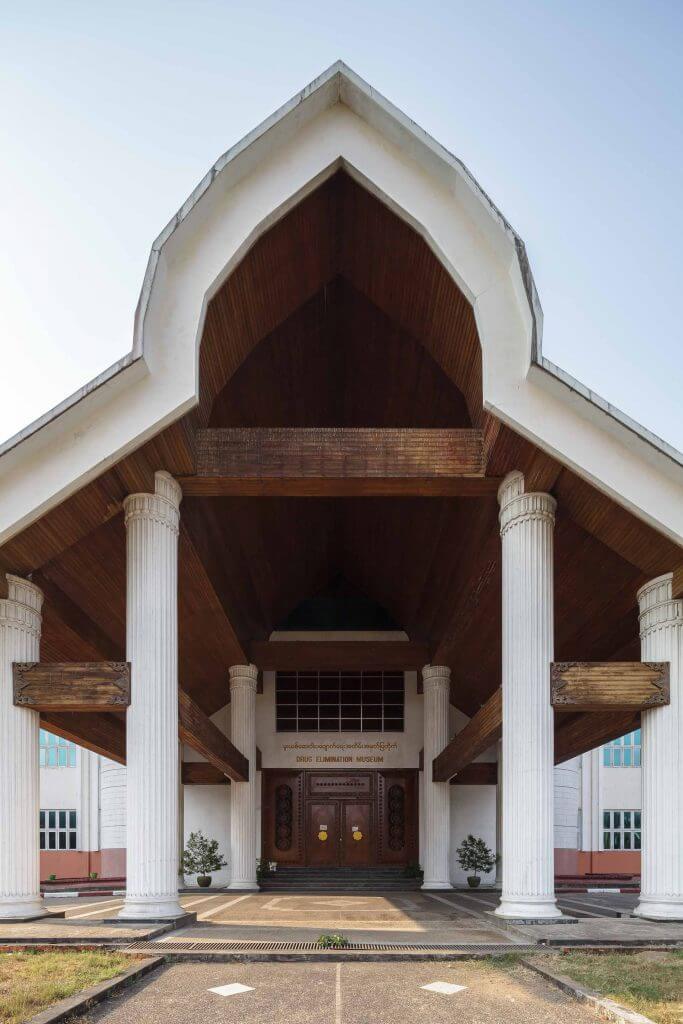
After the bloodbath of 1988, the junta reeled from international condemnation and sought ways to boost its international profile. In an article about the museum, Vice, an American magazine (with a loud, proud and liberal take on recreational drug consumption) notes that there were “650 square miles of opium-producing fields scattered throughout Myanmar, and 80 per cent of New York City’s street heroin arrived by way of Southeast Asia’s notorious Golden Triangle” in the 1990s; the bizarre museum showed a government “desperate for good PR”, in Vice’s words.
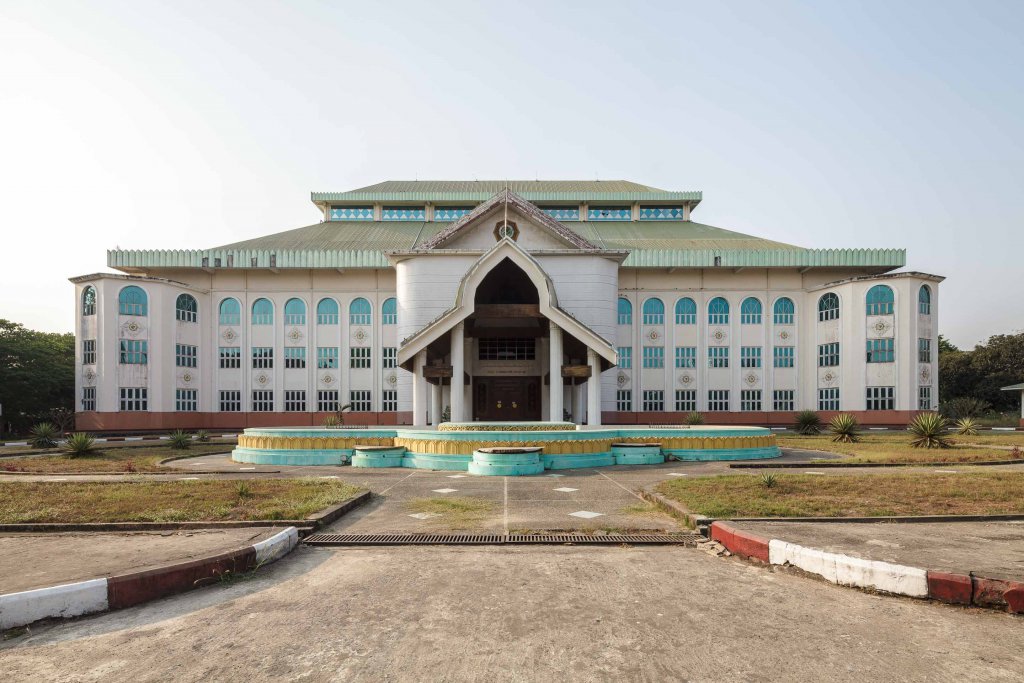
Today the problem is far from eradicated. Myanmar is the largest producer of methamphetamine and a mixture called yaba (methamphetamine and caffeine) is ravaging the country’s youth in many impoverished areas. While Myanmar’s war on drugs did appear to make some headway until the mid-2000s, poor farmers are returning to heroin production for lack of other options. Poppy cultivation nearly tripled between 2006 and early 2015.
